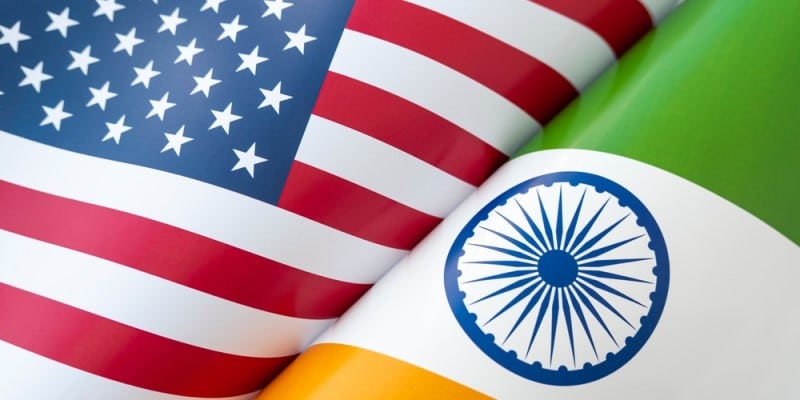
By Marta Lillo
The Indian government is reportedly discussing with the United States to gain “treaty country status,” which would allow Indian investors to apply for E-1 and E-2 nonimmigrant visas, among other benefits.
During the 14th Ministerial-level meeting of the India-United States Trade Policy Forum (TPF) in New Delhi, India, on Jan. 12, 2024, the Indian government reportedly raised this opportunity to promote bilateral trade.
Indian Commerce Minister, Piyush Goyal, told Indian media: “We want that this matter should be considered from the angle of a trade-enabler. [Bilateral] trade should be promoted, and USTR could ‘support’ our views in mutual interest.”
After the forum, the Commerce Ministry said in a statement that the Indian ministers leading the event “noted that the movement of professional and skilled workers, students, investors and business visitors between the countries contributes immensely to enhancing bilateral economic and technological partnership. Minister Goyal highlighted challenges being faced by business visitors from India due to visa processing time periods and requested the United States to augment processing. The Ministers also acknowledged the role of professional services in catalysing bilateral trade between the two countries and noted that issues related to recognition of professional qualifications and experience can facilitate services trade.”
If the U.S. grants India treaty country status, it could enable Indian investors to enter the U.S. through the E-2 visa by investing significant capital in a U.S. business. This possibility could also affect EB-5 applications since obtaining an E-2 visa is a sought-after stepping stone to qualify for the investor visa.
Impact on EB-5 if India becomes an E-2 treaty country
Indians are the second largest immigrant group applying for EB-5 after China.
Poorvi Chothani, Esq., managing partner at The Law Office of Poorvi Chothani, PLLC, says: “Overall, if India had an E-2 treaty with the U.S., I expect there will be a huge demand for the E-2 visa. Especially for startup companies in the tech space, as this would give them an opportunity to set up a business and grow it in the U.S. This could then lead to potential EB-5 investments leading to a green card.”
Jay Mehta, director of FRR Immigration, also affirms that if India “is included in the E-2 Treaty, it will open up so much opportunity. So many of our industries manufacture in India and export to the U.S. With the E-2, if the executive can open an office and run a business from both India and the U.S. without any immigration issues, it will be the biggest advantage for them.”
How does the E-2 route to obtain an EB-5 visa work?
Treaty Trader visas (E-1) and Treaty Investor visas (E-2) are nonimmigrant visas available for nationals of treaty countries (friendship, commerce, and navigation). They are common entry points for U.S. residency for nationals of these treaty countries.
However, many investors from non-U.S.-treaty countries also pursue these visas to obtain U.S. residency, albeit taking a longer route. In the case of E-2, these individuals first obtain citizenship in an E-2 treaty country through a citizenship-by-investment (CBI) program. After that, they can apply for the E-2 visa as citizens of a qualified nationality.
Turkey and Grenada are examples of E-2 treaty countries for which access to the E-2 visa is a leading factor attracting investors to their CBI programs.
Regarding Indian investors currently using this longer route to apply for EB-5, Chothani says “there are anecdotal reports that some Indians have taken up citizenship in Grenada or Turkey to avail of treaty benefits. This way, they qualify for an E-2 visa, allowing them to live in the U.S. to run a qualifying business while their EB-5 is under process, and their priority date becomes current.”
However, Chothani cautions Indian investors that “procuring an E-2 visa or traveling on an E-2 visa after filing an EB-5 petition needs to be carefully navigated. The fact that an investor has expressed immigrant intent by filing the EB-5 petition could be a challenge to establish nonimmigrant intent. An E-2 is not a dual intent visa, but officers would look at other considerations (in addition to the pending EB-5 petition) when adjudicating an E-2 application and/or at the time of admission into the U.S. in E-2 status.”
Meanwhile, Mehta says the possibility of India becoming an E-2 treaty country would allow a smoother transition for Indian business owners operating in the U.S. who use the L-1 visa option. “I think E-2 would be a good way to substitute the L-1 visa for Indian business owners that also have operations in the U.S.”
He also expects EB-5 applications from Indian individuals to increase if this opportunity comes into effect. “I still believe EB-5 applications would remain popular as most of the Indian applicants remain students or H-1B visa holders who at this time may not be looking to start their own business for an E-2 visa.”
DISCLAIMER: The views expressed in this article are solely the views of the author and do not necessarily represent the views of the publisher, its employees. or its affiliates. The information found on this website is intended to be general information; it is not legal or financial advice. Specific legal or financial advice can only be given by a licensed professional with full knowledge of all the facts and circumstances of your particular situation. You should seek consultation with legal, immigration, and financial experts prior to participating in the EB-5 program Posting a question on this website does not create an attorney-client relationship. All questions you post will be available to the public; do not include confidential information in your question.








